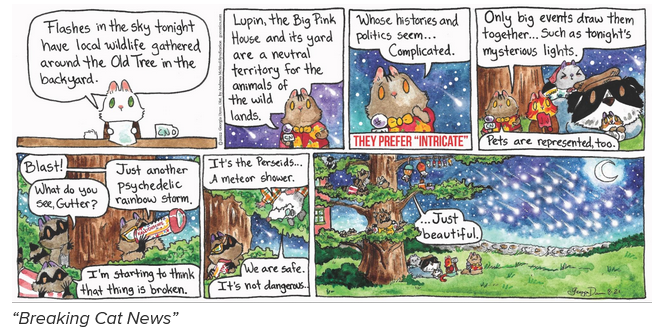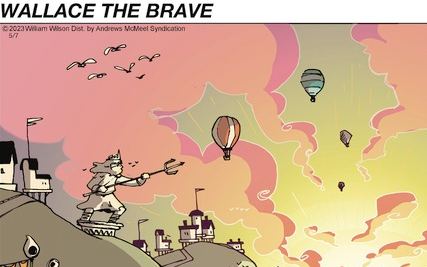I spent dozens of hours last fall interviewing newspaper cartoonists about how they draw their work, assuming that many would have adopted modern tools like a Wacom Cintiq tablet or at least a digital stylus paired with something like an iPad. Instead, I was surprised to find that many rely on traditional media, like ink, paint, and watercolor. Even more surprising? Many younger artists, who had the choice of whether to start in analog or digital, work on paper instead of on screen.
Glenn Fleishman, of How Comics Were Made: A Visual History from the Drawing Board to the Printed Page fame, writes about another facet of creating comic strips and finds some cartoonists find the old ways best … mostly.
Glenn asked some cartoonists about how they go about creating comic strips.

[Georgia Dunn] tried to make “Breaking Cat News” digitally but found it broke her drawing style and fluency. Using digital tools turned out to be inefficient and even maddening. By penciling and using watercolors, she was writing and developing her storylines through her hands, often coming up with the next week’s installment as she drew the current one, though she was unaware of that until she tried to change. She also found lettering by hand on paper provided another chance to review her dialog and was more flexible than prepping spaces into which she would have to drop a digital version of her lettering.
Will Henry, creator of “Wallace the Brave,” also works in watercolors. He described his enjoyment of the process to me:
I take pride in the mistakes in this comic, because when working with a pen and nib, you really get one chance—you can’t wipe some stuff out. If I worked digitally with my personality, I would be doing the line over and over and over again. Absolutely perfect. But one of the things that I think the tools I use and the product I create or the comic I create—I think there’s an overall acceptance of the non-perfect, the imperfect.

Both those cartoonists go on to discuss how they turn to digital tools to touch up and finalize their work.
John Backderf tells how he uses traditional drawing tools but letters digitally with his own font.
Glenn’s article also talks about the shrinking newspaper market (and newspapers), how expanding their comics into other venues are important to survive, and that few cartoonists can afford to use assistants these days:
No one suspects a new golden age is around the corner—the number of cartoonists who could make even $100,000 or more per year from their daily work is dwindling to the fingers of a few hands.
A very interesting and enlightening article about the production of current comic strips.

These two strips (BCN and Wallace) comprise (by far) the best artwork of all the comics on my regular daily reading list. The only other strip that comes close is Mutts, but only in the original monochrome form. The syndicate’s coloration completely ruins the charm of McDonnell’s artwork. I’m very glad that nobody has ever tried to colorize the Calvin & Hobbes daily strips: that would be sacrilege.
Many of us are drawing our comic strips on paper so that we can sell original artwork at comic conventions and on our websites. It also keeps AI from training on it.